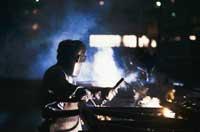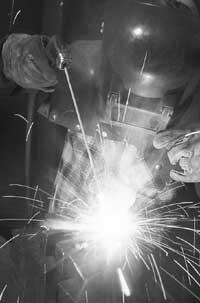Why is stainless steel oxidized?
2002/02/14 Galarraga Aiestaran, Ana - Elhuyar Zientzia
Now, researchers at the University School of London have discovered the cause of corrosion. Using a special microscope they have discovered that these points of corrosion that may appear anywhere appear at chrome-free times. Apparently, when the steel ingot cools, sulfur impurities less than a million millimeter are not yet solidified and absorb the surrounding chromium. Therefore, the steel around them is unprotected from chrome oxide.

The anticorrosive reinforcement is achieved by adding other metals such as molybdenum and titanium that oxidize more or less chromium. Although this represents an increase in steel, it is widely used in corrosive areas such as surgical implants.
According to researchers, this discovery has paved the way for cheaper methods to increase sustainability against corrosion. Changes in the cooling process are expected to prevent the problem. One of the solutions can be to heat the skin when the ingot is made, so that sulfur impurities release chromium.
Improved stainless steel with satisfactory results. Undoubtedly, these advances will be taken with enthusiasm, as stainless steel is widely used in everyday life.

Gai honi buruzko eduki gehiago
Elhuyarrek garatutako teknologia





